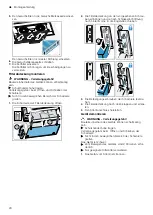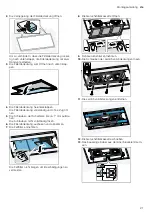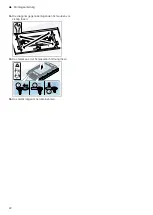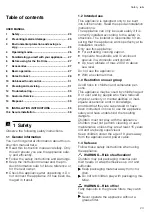
en
Troubleshooting
34
Leaking batteries may damage the remote control.
▶
Remove the batteries if you are not using the re-
mote control.
▶
Safely dispose of the empty or defective batteries in
an environmentally friendly manner.
1.
Remove the cover.
2.
Remove the empty batteries.
3.
Insert the new batteries (3 V CR 2032).
4.
Close the cover.
5.
Dispose of the empty batteries in an environmentally
friendly manner.
12 Troubleshooting
You can rectify minor faults on your appliance yourself. Read the troubleshooting information before contacting after-
sales service. This will avoid unnecessary costs.
WARNING ‒ Risk of injury!
Improper repairs are dangerous.
▶
Repairs to the appliance should only be carried out
by trained specialist staff.
▶
If the appliance is defective, call Customer Service.
WARNING ‒ Risk of electric shock!
Improper repairs are dangerous.
▶
Repairs to the appliance should only be carried out
by trained specialist staff.
▶
Only use genuine spare parts when repairing the
appliance.
▶
If the power cord of this appliance is damaged, it
must be replaced by trained specialist staff.
12.1 Malfunctions
Fault
Cause and troubleshooting
The appliance is not
working.
The mains plug of the power cord is not plugged in.
▶
Connect the appliance to the power supply.
The circuit breaker is faulty.
▶
Check the circuit breaker in the fuse box.
There has been a power cut.
▶
Check whether the lighting in your kitchen or other appliances are working.
Remote control not
working.
The batteries are flat.
▶
"Replacing the batteries in the remote control", Page 33
In the LED display,
the LEDs flash one to
five times after the
appliance is switched
off.
The batteries are almost empty.
▶
"Replacing the batteries in the remote control", Page 33
LED 1 flashes in the
LED display.
The grease filters are saturated.
▶
"Cleaning grease filters in the dishwasher", Page 33
▶
"Cleaning grease filters manually", Page 33
LED 2 flashes in the
LED display.
The odour filters are saturated.
▶
















































